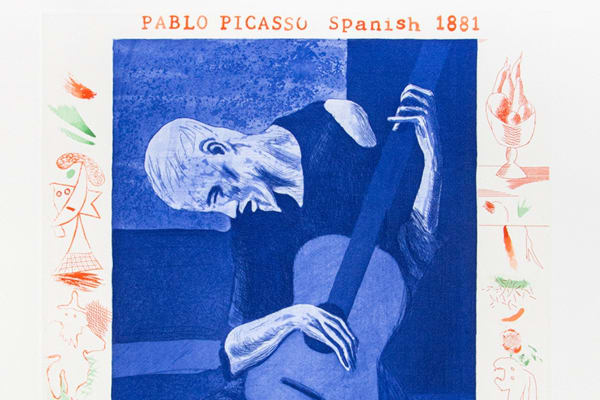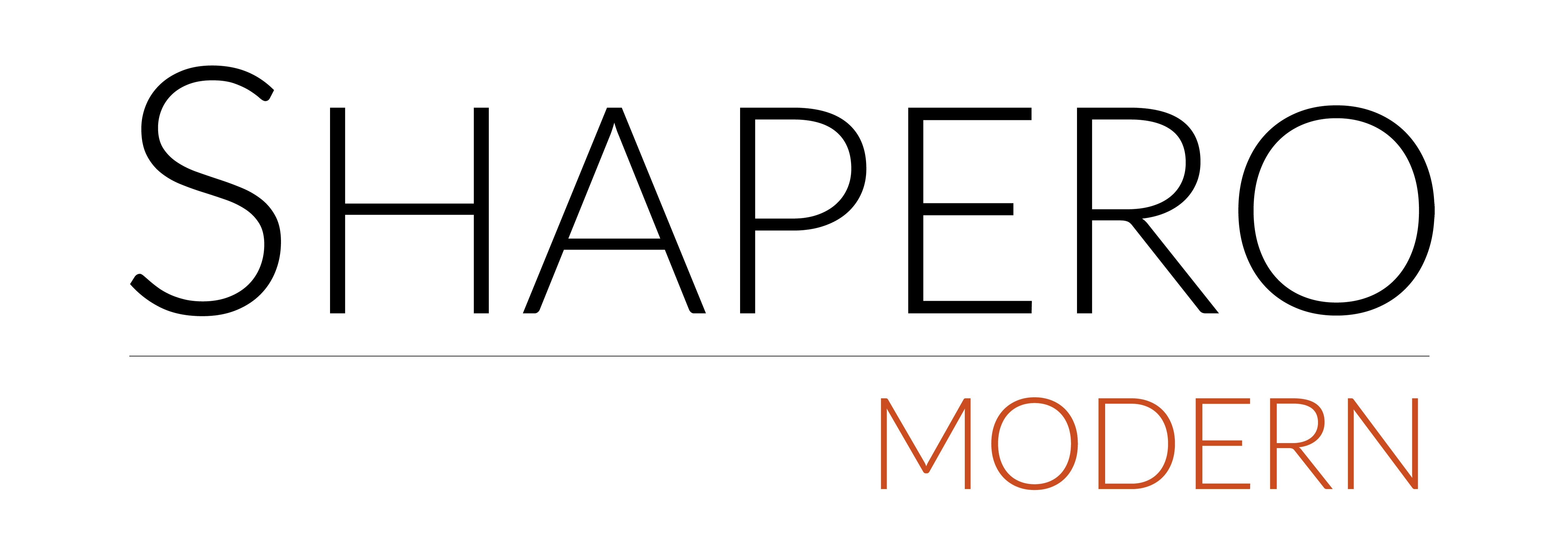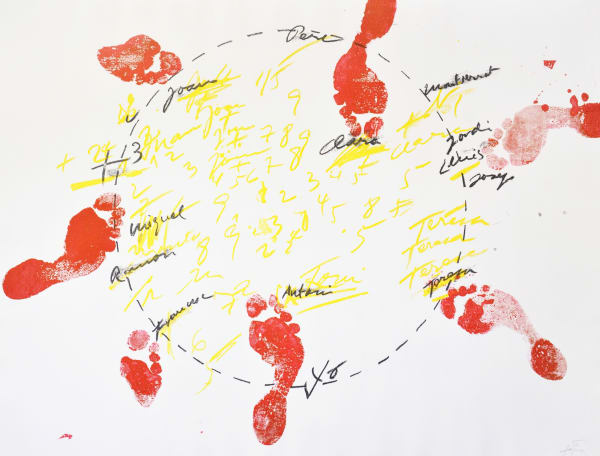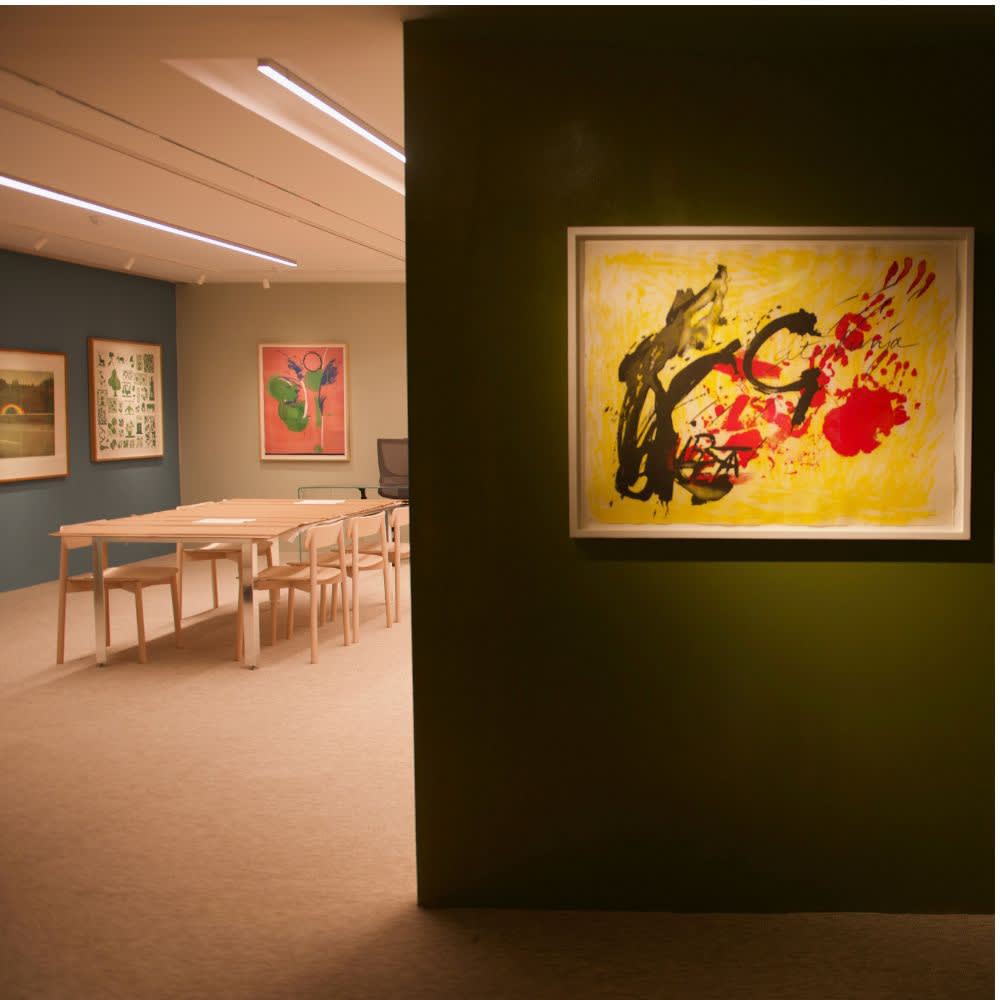Antoni Tàpies
Art should startle us out of our everyday lives. It should disrupt and awaken.
Antoni Tàpies, a Spanish painter and sculptor, was a leading figure in the art movement known as Art Informel. His work is characterised by its textured, abstract forms and incorporation of non-traditional materials, symbolizing a profound meditation on materiality and transcendence. Tàpies’ prints reflect his exploration of space, matter, and the spiritual, using a palette of earth tones and organic shapes. His art, deeply philosophical, invites viewers to reflect on existence and the human condition.
Explore signed prints by Antoni Tàpies available for sale at our gallery now.
Send me more information on Antoni Tàpies
Antony Tàpies (1923 – 2012) was born in Barcelona, Spain on 13th December 1923. Tàpies attended high school in Barcelona, expressing a keen interest in art from a young age. After suffering a devastating heart attack at seventeen years old, caused by tuberculosis, Tàpies spent the following two years recovering at a convalescent in the mountains, pursuing his passion for drawing and painting over this period. Upon his return to Barcelona, Tàpies begun to study law at the German School of Barcelona. He left after three years, and in 1943, he devoted himself solely to his art work.
In 1950, Tàpies held his first solo show at the Galeries Laietanes in Barcelona. He was included in the Carnegie International exhibition in Pittsburgh the same year. In 1953, Tàpies held his first shows in the USA, at the Marshall Field Art Gallery in Chicago and the Martha Jackson Gallery in New York. In 1958, Tàpies was awarded first prize for painting at the Pittsburgh International, and the same year received the UNESCO and David E. Bright Prizes at the Venice Biennale, which was his third time exhibiting at the Venice Biennale, having been included in 1952 and 1954 as well.
By 1962, Tàpies was honoured with a retrospective at the Solomon R. Guggenheim in New York. Additional retrospectives were held during the 1970s, including at the Musée National d’Art Moderne in Paris (1973) and at the Albright-Knox Gallery, Buffalo, New York (1977). He was the subject of the retrospective exhibition at the Jeu de Paume in Paris (1994) and at Kestnergesellschaft in Hannover (1998) and at the Pace Wildenstein in New York (2000) where his multimedia paintings, small bronzes and assemblages were hugely successful. The Museo Nacional Centro de Arte Reina Sofia held an exhibition of his work in 2000, and he was exhibited at the Anita Shapolsky Gallery in New York three times, in 2006, 2012 and 2014.
Tàpies’ is well known for spearheading Dau al Set, the Post-War Spanish movement bridging Surrealism and Dadaism. Combining the principles of the two schools, some of Tàpies’ most famed work is in the pintura materica (matter painting) style: using non-artistic materials in painting and mixed media. To materialise this legacy and the groundbreaking contributions to avant-garde art that Tàpies made, the Antoni Tàpies Foundation (Fundació Antoni Tàpies) in Carrer d’Aragó, Barcelona was founded with the primary function of education about contemporary art The foundation was opened in 1984 by Tàpies himself, and it remains dedicated and the paths carved out by previous artists such as Tàpies in addition to offering practical education. The foundation is home to the largest repository of Tàpies’ work, largely donated by Tàpies himself. Tàpies is collected worldwide, including by Albright-Knox Art Gallery, New York; The Baltimore Museum of Art, Maryland; Centro Atlántico de Arte Moderno, Las Palmas; City Hall, Barcelona; Essl Museum – Kunst der Gegenwart, Austria; Foundation Maeght, Saint-Paul de Vence; Hirshhorn Museum and Sculpture Garden, Smithsonian Institution, Washington .D.C.; Museo d’Arte Moderna, Ca’ Pesaro, Venice; Museum Lissone, Milan; The Museum of Modern Art, New York and the Tate, London.
-

Modern Spanish Printmakers
The visionary works of Spain’s modern masters Apr 10, 2025Modern Spanish Printmakers This week, we explore the works of Spain’s most iconic modern masters, whose innovative approaches to traditional printmaking techniques continue to shape...Read more -

Power of Colours | Mylands X Shapero Modern
In Collaboration with Interior Designer Beata Heuman Feb 11, 2025The Power of Colour Shapero Modern & Beata Heuman Collab At the launch, a panel of speakers explored the significance of colour in art and...Read more -

Intaglio Printmaking
June 14, 2023I ntaglio… is the word used to describe the collection of printmaking techniques that create a print by incising an image onto a surface, known...Read more





